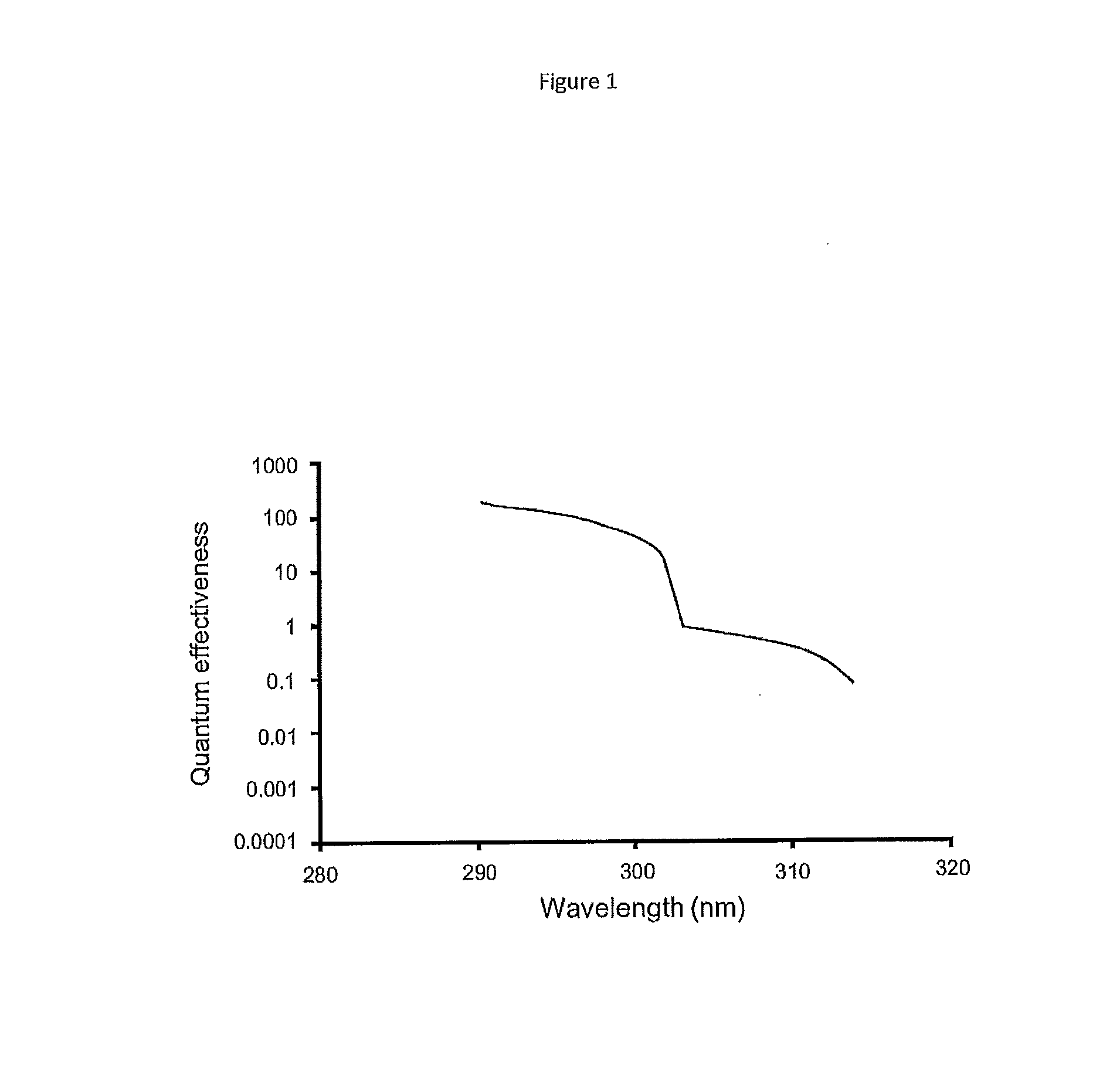Method to improve crop yield and/or quality
- Summary
- Abstract
- Description
- Claims
- Application Information
AI Technical Summary
Benefits of technology
Problems solved by technology
Method used
Image
Examples
example 1
Example Use of UV Light to Increase Hardiness and / or Crop Yield
[0136]Green lettuce plants were germinated in vermiculite, and upon appearance of cotyledons were transferred into a standard potting mixture. Plants were maintained under a visible light intensity of 400 μmol m−2 s−1 for 10 days, at a photoperiod of 14 hr / 10 hr light / dark.
[0137]Plants were then exposed to a narrow-band UV dosage peaking at 290 nm using an LED (Light Emitting Diode) array. At the same time, a proportion of the same population of lettuce plants were exposed to a narrow-band UV dosage peaking at 354 nm using an LED (Light Emitting Diode) array.
[0138]The plants were exposed to a UV dosage for seven days at the same time as being exposed to background visible light. At the end of the seven days of UV treatment, plants were planted into a rotivated soil bed at an adjacent outdoor field site, with a selection of those plants destructively harvested for assessment of the three measured variables of average Hard...
example 2
Green Lettuce Disease and Field Assessed Fresh Weights
[0144]Green lettuce seedlings grown as described above, were planted 24 hrs after UV treatment (according to the present invention), into a lettuce field planting site carrying Sclerotina fungal disease. A moving light array treatment method was used according to New Zealand Patent Application Number 621039. The UV dosage regime included treatment for 7 days (12 hours on / 12 hours off) in 2 week old plants using 0.16798 W m−2 s−1 [at a peak wavelength of 303 nm].
[0145]An assessment was carried out to determine the “hardiness” of the plants of the UV treated seedlings according to the present invention compared to untreated seedlings, 24 hrs after UV treatment had finished. The results in Table 2 show that leaf area (or ‘SLA’ as a component of Hardiness Index) was reduced in treated seedlings immediately following UV treatment, which is a indication that increased hardiness had been achieved.
TABLE 2Leaf area (cm2)UVS.E.UV11.07*0.40...
example 3
Red Lettuce Hardiness and Crop Yield Assessment
[0148]A trial was performed on red lettuce seedlings, grown and then field-planted after UV treatment as described above, to determine the effect of UV treatment as claimed compared to control groups. A moving light array treatment method was used according to New Zealand Patent Application Number 621039. The UV dosage regime included treatment for 7 days (12 hours on / 12 hours off) at age 2 weeks using 0.06374 W m-2 s-1 [at a peak wavelength of 286 nm].
[0149]The results are shown below in Table 4. Following an outside standing period of 9 days, a H value of 3.08 was measured in UV-treated plants. In addition, the UV-treated samples showed clear improvements in fresh weight and leaf area compared to the No UV controls at 9 days post treatment, and at final harvest at 5 weeks post-field planting.
TABLE 4VariableUVS.E.No UVS.E.post-UV treatment harvest [7 days]Fresh Weight (g)0.620.050.710.07Leaf Area (cm2)23.101.7325.492.22Dry Weight (g)0....
PUM
 Login to View More
Login to View More Abstract
Description
Claims
Application Information
 Login to View More
Login to View More - R&D
- Intellectual Property
- Life Sciences
- Materials
- Tech Scout
- Unparalleled Data Quality
- Higher Quality Content
- 60% Fewer Hallucinations
Browse by: Latest US Patents, China's latest patents, Technical Efficacy Thesaurus, Application Domain, Technology Topic, Popular Technical Reports.
© 2025 PatSnap. All rights reserved.Legal|Privacy policy|Modern Slavery Act Transparency Statement|Sitemap|About US| Contact US: help@patsnap.com



